Verdict
Hot hatches and diesel engines have always combined with varying degrees of success and that remains the case with the latest Octavia vRS TDI. It’s a very competent all-rounder delivering family-friendly practicality and decent performance, but it lacks the excitement and engagement that every great hot hatch should deliver. The fact it's the same price as a petrol-powered vRS, which rectifies the diesel’s shortcomings, makes it a tough one to recommend.
The Skoda Octavia is a superb family car, so good in fact it was crowned the Auto Express Car of the Year in 2020. When it comes to value for money, practicality and ease of use, no sensible car on sale today does it better.
Another thing the Octavia has going for it is its level of versatility. Hatchback or estate, petrol, diesel or plug-in and front- or all-wheel drive, whatever the recipe there’s a chance Skoda has the combination you desire - and that even extends to performance; we’ve already driven petrol and plug-in hybrid versions of the racy vRS model, but now we’ve had the chance to drive the diesel for the first time.
- SEE MORE Best hot hatchbacks 2021
Performance-focused diesels are few and far between these days, but Skoda has been doing them for almost 20 years. So is the third generation of the Octavia vRS TDI worth considering?
It’s powered by a 2.0-litre four-cylinder turbo engine that develops 197bhp and 400Nm of torque. That's a 15bhp boost over its predecessor, courtesy of a higher compression ratio and a new aluminium engine block and pistons. It’s offered with a seven-speed dual-clutch automatic gearbox only, which means a 0-62mph time of 7.4 seconds - not slow, but not exactly hot hatch territory. At £33,530, for the estate we’re testing here, it’s not exactly cheap either.
Compare that with a 2.0 TSI Octavia vRS petrol and, on paper at least, the diesel doesn’t make an awfully strong case for itself. Spec-for-spec the TSI is identically priced, but stick with a manual - which we’d recommend - and you’ll save a tasty £1,680.
The TSI is also quicker from 0-62mph (6.7 versus 7.4 seconds), is lighter and gets a mechanical limited-slip differential, whereas the diesel only features an electronic differential lock, known as an XDS+. They sound similar, but they do very different jobs and make a big difference to how a car drives, especially a hot hatch, as we’ll come on to.
Where the diesel fights back, unsurprisingly, is fuel economy. Skoda says it’ll return up to 55mpg compared with 40mpg for the TSI. However, how often you’ll be filling up is unlikely to be a chief concern to someone in the market for a hot hatch.
Start the engine and the vRS TDI fires up with the usual diesel clatter, but it does settle once up to temperature. At lower speeds and with the driving mode set to normal the vRS feels just like a regular Octavia - the only exception being the firmer but still acceptable ride that’s a result of the 15mm lowered sports suspension and large 19-inch alloy wheels, which come fitted as standard.
The muscular band of torque makes the vRS feel faster than the figures suggest. There’s little point extending the engine beyond 3,500rpm as the bulk of power lies below that threshold and the engine does begin to make a racket if you rev it out.
The seven-speed DSG gearbox is good if not great; it’s a little lethargic with its changes up and down ratios when you use the steering wheel-mounted paddles. It seems to work best when left to its own devices.
Where the main differences can be felt over the vRS TSI is in the corners. The diesel lacks that degree of nimbleness during quicker changes of direction, partly a consequence of not featuring a proper limited slip differential as well as being a little heavier.
Grip from the front end is strong enough, but push the car a little harder and you can feel it beginning to push on as the tyres begin to lose their purchase with the road surface. The XDS+ system nibbles at the brakes of the inside wheel to help rotate the car but the amount of torque going through the front wheels seems to overwhelm the system, making its impact hard to spot.
It’s not helped by steering that does feel quite light and vague in comfort mode and too heavy and artificial in Sport mode. In that setting the ride quality also becomes noticeably firmer, but not uncomfortably so. The damping is still controlled and ride quality is acceptable. On the whole, the vRS TDI is a quick and capable performance car, but not one that is going to deliver maximum thrills.
Of course, the rest of the Octavia package remains unchanged. Generous rear passenger space and a 640-litre boot - that rises to 1,700 litres with the rear bench dropped - makes it an ideal family car.
At least given the price there’s no shortage of standard kit; adaptive cruise control, matrix LED headlamps, a 10.25-inch digital display, wireless Apple CarPlay connectivity, a full suite of parking sensors, heated seats and steering wheel plus arch-filling 19-inch alloy wheels all come as standard.
| Model: | Skoda Octavia vRS estate 2.0 TDI |
| Price: | £33,530 |
| Engine: | 2.0-litre 4cyl turbodiesel |
| Transmission: | Front-wheel drive, seven-speed dual-clutch automatic |
| Power/torque: | 197bhp/400Nm |
| 0-62mph: | 7.4 secs |
| Top speed: | 152mph |
| Economy: | 55.9mpg |
| CO2: | 132g/km |
| On sale: | Now |
from Sitewide RSS feed https://ift.tt/3i3E4S8

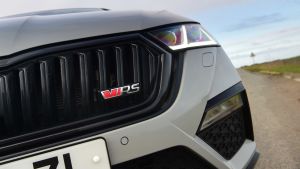
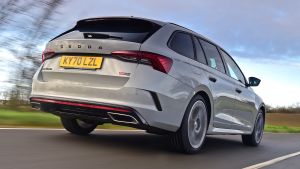
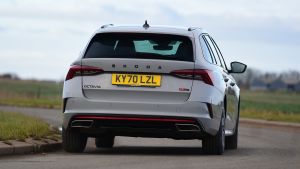
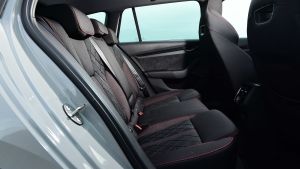

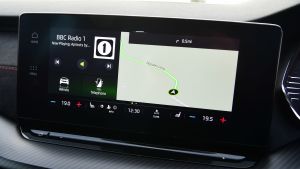
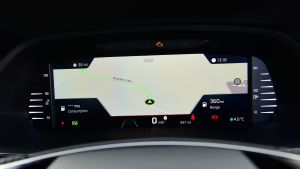
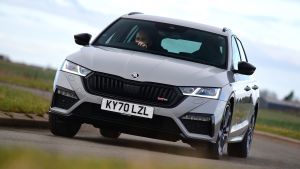
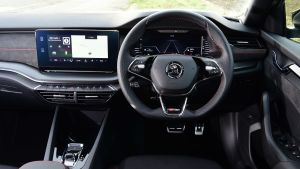


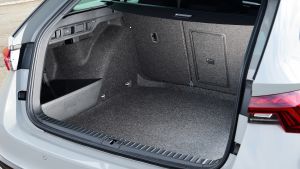
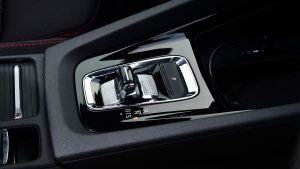

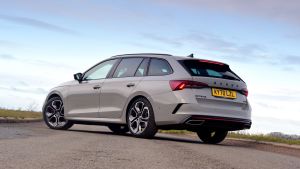
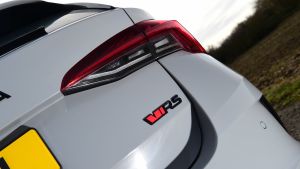

No comments:
Post a Comment